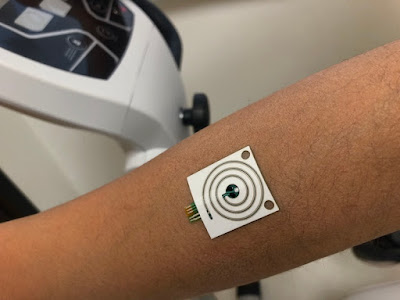Running on air Close-up of the air-powered sensing device. (Courtesy: William Grover/UCR)
Topics: Computer Science, Electrical Engineering, Materials Science, Microfluidics
A device containing a pneumatic logic circuit made from 21 microfluidic valves could be used as a new type of air-powered computer that does not require any electronic components. The device could help make a wide range of important air-powered systems safer and less expensive, according to its developers at the University of California at Riverside.
Electronic computers rely on transistors to control the flow of electricity. But in the new air-powered computer, the researchers use tiny valves instead of transistors to control the flow of air rather than electricity. “These air-powered computers are an example of microfluidics, a decades-old field that studies the flow of fluids (usually liquids but sometimes gases) through tiny networks of channels and valves,” explains team leader William Grover, a bioengineer at UC Riverside.
By combining multiple microfluidic valves, the researchers made air-powered versions of standard logic gates. For example, they combined two valves in a row to make a Boolean AND gate. This gate works because air will flow through the two valves only if both are open. Similarly, two valves connected in parallel make a Boolean OR gate. Here, air will flow if either one or the other of the valves is open.
Air-powered computers make a comeback, Isabelle Dumé, Physics World

